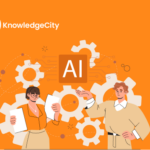Employee training is a work program that provides employees with specific knowledge and skills to facilitate and improve job performance in current roles. However, while most organizations understand the importance of initial job training and training new employees, many neglect investing in continued training and development and pay a high price in lost talent, productivity, and profits.

Quality employee training and development allows organizations to retain the right talent and boost profits. In this tight job market, competition for top talent is more competitive than ever. Recruiting quality employees takes time and money. How you train, develop and engage that talent directly impacts retention and growth. But it’s not just about retention. Effective employee training and development also contributes to a healthier bottom line overall.
5 Benefits of Employee Training and Development
1. Higher Productivity
Employee training implicitly empowers employees to be more effective and efficient at their jobs. It also improves employee engagement, which increases productivity.
2. Higher Employee Retention
A Harvard Business Review study found that the lack of career development opportunities was a major driver in job dissatisfaction and early exits. When employees feel that companies are investing in their futures rather than just their current job roles, they’re more likely to invest back in the company with increased loyalty, engagement, and productivity.
Furthermore, people simply like feeling valued and being competent. When employees feel that they’re important to an organization and are properly prepared to do their jobs well, they have higher job satisfaction, leading to lower rates of absenteeism and turnover.
3. Fewer Accidents
Training provides employees with the knowledge and skills they need to prevent and handle any errors and accidents on the job.
4. Lower Supervision
Well-trained employees are fully aware of expectations, duties and responsibilities. Consequently, they require less costly supervision, allowing your organization to devote these resources toward more strategic endeavors.
5. Securing Long-Term Organizational Success
Leadership has an enormous impact on the success of any given organization. Consequently, preparing and retaining talent to shift into these roles is critical. Providing employees with better knowledge and skills prepares them to take your organization to the next level.
It’s clear that quality employee training and development is crucial to organizational success. However, these programs don’t just happen by chance. They require careful planning and implementation. The following steps can help you create an employee training and development program that works for your specific business objectives and long-term goals.
5 Steps to Creating an Effective Employee Training Program
1. Identify Business Goals
Evaluate your company’s overall strategic goals. Then, use these goals to guide employment training design and development, focusing on creating programs that have measurable impact on goal attainment. A quality learning management system (LMS) is the best way to ensure quality control, training and results.
2. Measurable Learning Goals and Objectives
Learning objectives should have long- and short-term measurable outcomes to evaluate training effectiveness. Then, implement regular improvements to methodologies as necessary. An effective way to ensure employees are consistently meeting and exceeding objectives and expectations is to use a learning management system that has mapping, tracking, reporting, testing and certification capabilities.
3. Find Skill Gaps
Determine how current employee behavior is impacting business goals. Also, analyze gaps between current and ideal skill sets to find specific learning objectives. Ideally, your employee training plan should target three learning objective groups:
- Skills – Providing tools that employees need to perform their jobs effectively
- Critical Thinking – Providing critical knowledge and thinking methodologies to allow employees to excel in a manner that goes beyond department and job function for increased cross-functionality
- Motivation – Identify why training is important to employees beyond job function to motivate workers to excel at training initiatives
These learning objective groups should be applied to all areas of your corporate training, including communication training for employees, employee engagement training, ethics training for employees, HR learning, and employee relations training, as well as critical training for new managers and supervisors.
Take a look how KnowledgeCity’s Employee Engagement course addresses these three learning objective groups to ensure optimal comprehension and information retention.
4. Layer Employee Training Methodologies
Use multilayered training activities to create long-term performance improvement by blending learning experiences and training methods to target essential business, customer, and employee needs. The most effective training programs combine different learning elements to optimize the learning experience. For example, KnowledgeCity’s courses specifically combine video, animation, and interactive elements to ensure your training efforts don’t simply go in one ear and out the other.
KnowledgeCity’s Emotional Intelligence course provides a great example of hitting on these various teaching methodologies to drive learning home.
You also may want to consider cross training employees. Not only does this ensure cross functionality between departments so that operations are never dependent on specific individuals. It also increases engagement, productivity and morale by making employees more invested in the operational bigger picture.
5. Post-Training Reinforcement
If your employee training program is only used as a means to an end during new hire orientation, you’re doing yourself and your employees a huge disservice. Not only will your employees forget everything they learned during the new employee orientation, they miss the opportunity to take away additional insight and truly grow from the material.
This is where online employee training and microlearning come into play. Make sure your that new hire training goes above and beyond orientation by allowing employees to access it whenever and wherever they need it on their own devices.
Microlearning methodologies like those in KnowledgeCity’s expansive learning library allow employees to access training material quickly in easily digestible chunks that help with retention. It’s also available for employees to review and further develop their skills on their own time.
Subscribe to Our Newsletter
Join 80,000+ Fellow HR Professionals. Get expert recruiting and training tips straight
to your inbox, and become a better HR manager.

 KnowledgeCity
KnowledgeCity 













